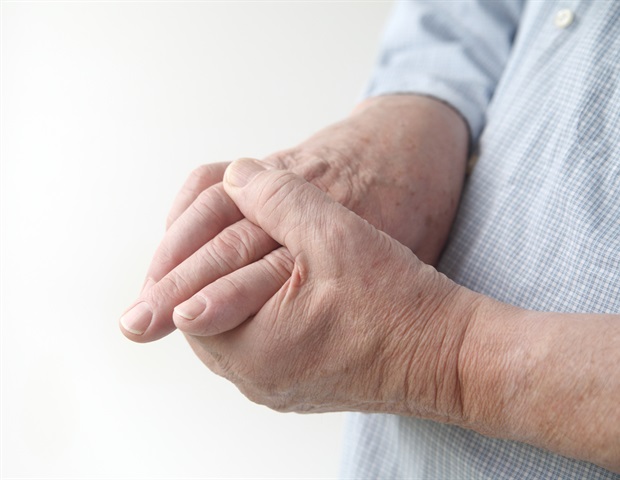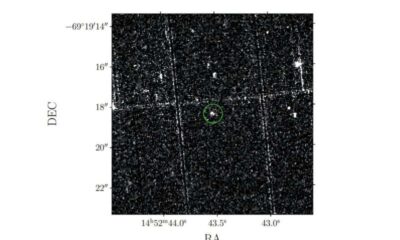Health
New Study Reveals Alternative Pathway for Uric Acid Breakdown

A recent study published in Life Metabolism has identified a previously unknown pathway for uric acid degradation in anaerobic bacteria. This discovery could reshape the understanding of how uric acid is metabolized, providing insights that may enhance treatment options for conditions such as gout and kidney stones, which result from elevated uric acid levels in the blood.
Uric acid accumulates when the body struggles to excrete it efficiently. Traditional treatments focus on inhibiting uric acid production, but these medications can lead to side effects and may not be effective for all patients. For years, the primary known mechanism for uric acid degradation was an oxidative pathway, where enzymes known as uricases utilize oxygen to convert uric acid into allantoin. Humans and higher primates, lacking functional uricase, are particularly susceptible to high uric acid levels and related disorders.
The study led by Z. Li and colleagues introduces an alternative “reductive pathway” that operates without oxygen. In this newly identified pathway, uric acid is first reduced to a metabolite termed “yanthine.” This is followed by a series of reductive reactions that cleave the purine ring, ultimately producing smaller molecules such as pyruvate and ammonia.
Implications for Diagnosis and Treatment
Significantly, the research found that “yanthine” circulates in human blood, with elevated levels observed in patients diagnosed with gout compared to healthy individuals. This finding suggests that “yanthine” could be a valuable biomarker for diagnosing and monitoring uric acid-related disorders.
To explore the potential therapeutic applications of this discovery, the researchers engineered a probiotic strain of Escherichia coli to activate the reductive pathway continuously. In experiments using a mouse model deficient in uricase and exhibiting hyperuricemia, oral administration of this engineered strain resulted in significantly reduced blood uric acid levels. The treatment also alleviated kidney injury and maintained stable colonization in the gut.
These findings not only advance the fundamental understanding of purine catabolism but also highlight the metabolic versatility of gut bacteria in anaerobic environments. The identification of the reductive uric acid pathway represents a significant addition to the known microbial metabolic repertoire.
Future Directions in Gout Management
The implications of this research extend beyond basic science. The potential to utilize “yanthine” as a biomarker could lead to more accurate diagnostics for gout and related conditions. Furthermore, the development of probiotic-based strategies may offer a novel approach to managing elevated uric acid levels, potentially improving the quality of life for those affected by gout and other complications related to uric acid accumulation.
Overall, this study points toward exciting future applications in both biomarker discovery and therapeutic interventions, paving the way for enhanced management of uric acid-related disorders. As research continues to unfold, the integration of these findings into clinical practice may soon provide new hope for patients struggling with these painful conditions.
-

 Entertainment1 month ago
Entertainment1 month agoKim Cattrall Posts Cryptic Message After HBO’s Sequel Cancellation
-

 Entertainment1 month ago
Entertainment1 month agoKate Garraway Sells £2 Million Home Amid Financial Struggles
-

 Entertainment2 weeks ago
Entertainment2 weeks agoMasterChef Faces Turmoil as Tom Kerridge Withdraws from Hosting Role
-

 Entertainment1 month ago
Entertainment1 month agoAldi Launches Cozy Autumn Fragrance Range Ahead of Halloween
-

 Entertainment2 months ago
Entertainment2 months agoSpeculation Surrounds Home and Away as Cast Departures Mount
-

 Entertainment1 month ago
Entertainment1 month agoMarkiplier Addresses AI Controversy During Livestream Response
-

 Health1 month ago
Health1 month agoWigan and Leigh Hospice Launches Major Charity Superstore
-

 Lifestyle3 weeks ago
Lifestyle3 weeks agoSummer Flags Spark Controversy Across England as Patriotism Divides
-

 Science1 month ago
Science1 month agoAstronomers Unveil New Long-Period Radio Transient ASKAP J1448−6856
-

 Entertainment1 month ago
Entertainment1 month agoLas Culturistas Awards Shine with Iconic Moments and Star Power
-

 Entertainment1 week ago
Entertainment1 week agoKatie Price Celebrates Surprise Number One Hit with Family Support
-

 Entertainment3 weeks ago
Entertainment3 weeks agoTurmoil in Emmerdale: Charity Dingle and Mack’s Relationship at Risk








